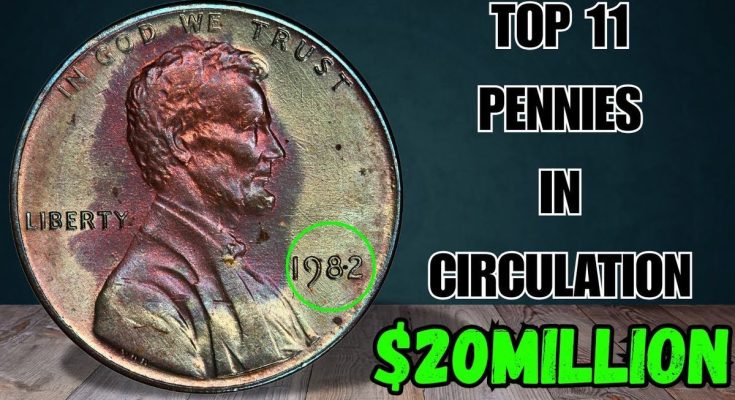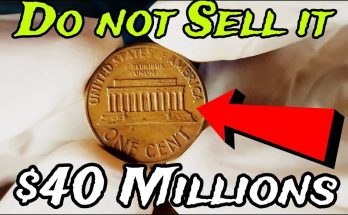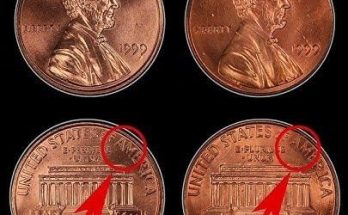Top 11 Most Valuable Pennies in Circulation — Find Out If You Own One!.
Decoding the Value of the Humble Penny
The provided image and caption, “Top 11 Most Valuable Pennies in Circulation — Find Out If You Own One!”, are designed to ignite the excitement of a treasure hunt. The visual presents a collage of Lincoln cents, each with a year and an impressive price tag, ranging from hundreds to hundreds of thousands of dollars. The list includes years like 1943, 1969, 1909, and even 1982, hinting that these seemingly common coins can be anything but.
This image taps into a widespread fascination with numismatics—the study and collection of coins. It’s a field where minute details, historical context, and production errors can transform a piece of pocket change into a priceless artifact. However, it’s important to separate the myth from the reality. While the pennies on this list are indeed valuable, the vast majority of coins with these dates are not. Their value is tied to specific, and often very rare, characteristics.
Let’s break down some of the most famous examples from the photo:
The 1943 Penny: This is arguably the most famous and valuable of all U.S. pennies. During World War II, copper was a vital resource for the war effort, so the U.S. Mint switched to a zinc-coated steel composition for the 1943 cent. However, a small number of leftover copper planchets from 1942 were accidentally struck with the 1943 dies. These “1943 copper pennies” are incredibly rare and highly sought after, with some examples selling for over a million dollars. The image also references the 1943-D, which is even rarer with only one confirmed example, and the 1944 Steel Penny, a similar transitional error.
The 1969-S Doubled Die Obverse: The 1969-S penny with a Doubled Die Obverse is another legendary error coin. This error occurred when a die used to strike the coins was improperly prepared, resulting in a noticeable doubling of the lettering on the obverse side of the coin, particularly in the words “LIBERTY” and “IN GOD WE TRUST,” as well as the date. The “S” mint mark indicates it was minted in San Francisco. Because a large portion of the mintage was recalled and destroyed, very few of these coins made it into circulation, making them extremely valuable.
The 1909-S VDB: The 1909-S VDB penny is a key date in the Lincoln cent series, marking the first year of the coin’s production and the initials of its designer, Victor David Brenner (“VDB”). Public backlash over the prominent initials led to their removal shortly after release, making the initial “S” (San Francisco) and VDB combination a low-mintage and highly collectible variety.
The 1982 Penny: The 1982 penny is a more recent example of a valuable transitional error. This year, the U.S. Mint changed the penny’s composition from a mostly copper alloy to a lighter, copper-plated zinc one to save money. As a result, 1982 cents exist in two distinct varieties: “Large Date” and “Small Date,” and in both compositions. The most valuable variety is the 1982-D Small Date Copper, which is a rare error where a copper planchet was mistakenly struck with the new, smaller date die at the Denver Mint. The most valuable examples of these, graded in high condition, can sell for thousands of dollars.
For the average person, the chance of finding one of these multi-thousand dollar coins in their pocket change is extremely low. These are coins that, due to their rarity, have either been long since pulled from circulation by collectors or were never released in significant numbers in the first place. The value of a coin is determined by several factors: its rarity, its condition (or “grade”), and any unique errors or varieties it possesses. A professional grading service is often required to authenticate a valuable coin and provide an official grade.
The photo, however, serves a wonderful purpose: it introduces people to the thrill of the hunt. It inspires them to look a little closer at their change, to appreciate the history behind each coin, and to learn about the fascinating stories of minting errors and rare varieties that can turn a simple penny into a true treasure.



